-
 Bitcoin
Bitcoin $83,003.8346
-0.90% -
 Ethereum
Ethereum $1,787.6973
-1.64% -
 Tether USDt
Tether USDt $0.9995
0.01% -
 XRP
XRP $2.1263
0.23% -
 BNB
BNB $591.2351
-0.90% -
 Solana
Solana $119.1255
-3.05% -
 USDC
USDC $0.9999
0.01% -
 Dogecoin
Dogecoin $0.1680
-1.02% -
 Cardano
Cardano $0.6486
-1.38% -
 TRON
TRON $0.2377
-0.81% -
 UNUS SED LEO
UNUS SED LEO $9.0563
-5.00% -
 Chainlink
Chainlink $12.6573
-2.11% -
 Toncoin
Toncoin $3.2615
-3.30% -
 Stellar
Stellar $0.2502
-3.15% -
 Avalanche
Avalanche $17.8425
-1.32% -
 Shiba Inu
Shiba Inu $0.0...01229
0.67% -
 Sui
Sui $2.2042
-3.02% -
 Hedera
Hedera $0.1612
-2.25% -
 Litecoin
Litecoin $82.0175
-2.55% -
 Polkadot
Polkadot $3.9412
-2.25% -
 MANTRA
MANTRA $6.2543
-0.12% -
 Bitcoin Cash
Bitcoin Cash $300.2157
0.46% -
 Dai
Dai $1.0001
0.02% -
 Bitget Token
Bitget Token $4.4395
-1.99% -
 Ethena USDe
Ethena USDe $0.9991
0.02% -
 Hyperliquid
Hyperliquid $11.8287
-1.42% -
 Monero
Monero $212.7655
-0.81% -
 Pi
Pi $0.5759
9.84% -
 Uniswap
Uniswap $5.8019
-1.57% -
 OKB
OKB $51.5723
5.60%
How to choose the buying point for cryptocurrency
To maximize profits in crypto, use technical analysis like support/resistance, moving averages, RSI, and volume, alongside fundamental analysis and DCA to mitigate risk.
Mar 30, 2025 at 03:22 pm
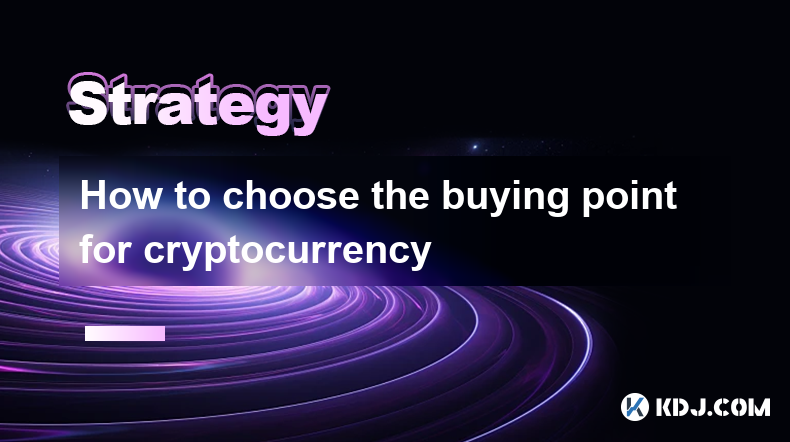
Understanding Market Sentiment and Technical Analysis
Choosing the right buying point for cryptocurrency is crucial for maximizing profits and minimizing losses. It's not about predicting the future price, but rather about increasing your odds of buying low and selling high. This involves understanding market sentiment and employing technical analysis tools. Ignoring these factors can lead to significant losses, even with promising projects. Remember, no method guarantees success in the volatile crypto market.
Identifying Support and Resistance Levels
A cornerstone of technical analysis is identifying support and resistance levels. Support represents a price level where buying pressure is strong enough to prevent further price drops. Conversely, resistance signifies a price level where selling pressure overwhelms buying pressure, hindering price increases. These levels are often identified by looking at past price action on charts. Breaks above resistance or below support can signal significant price movements.
Utilizing Moving Averages
Moving averages (MAs) smooth out price fluctuations, providing a clearer picture of the overall trend. Commonly used MAs include simple moving averages (SMA) and exponential moving averages (EMA). A bullish crossover occurs when a shorter-term MA crosses above a longer-term MA, suggesting a potential uptrend. Conversely, a bearish crossover signals a potential downtrend. Traders often use these crossovers as potential buy or sell signals.
Reading the Relative Strength Index (RSI)
The RSI is a momentum indicator that measures the magnitude of recent price changes to evaluate overbought or oversold conditions. An RSI above 70 generally indicates an overbought market, suggesting a potential price correction or pullback. An RSI below 30 often suggests an oversold market, potentially indicating a buying opportunity. However, it's important to note that the RSI can remain in overbought or oversold territory for extended periods.
Analyzing Volume
Trading volume provides valuable insights into the strength of price movements. High volume during price increases confirms the strength of the uptrend, while high volume during price decreases confirms the strength of the downtrend. Low volume during price movements can indicate a lack of conviction and potential for a reversal. Analyzing volume in conjunction with price action can improve your decision-making.
Recognizing Chart Patterns
Various chart patterns can provide clues about potential price movements. Head and shoulders patterns often precede downward price movements, while double bottoms and triple bottoms can suggest potential support levels and buying opportunities. Understanding these patterns requires practice and experience in interpreting price charts.
The Importance of Divergence
Divergence occurs when price action and an indicator like the RSI or MACD move in opposite directions. Bullish divergence happens when the price makes lower lows, but the indicator forms higher lows. This can signal a potential bullish reversal. Bearish divergence is the opposite, suggesting a potential bearish reversal. Identifying divergence requires careful observation and understanding of indicator behavior.
Utilizing Fibonacci Retracements
Fibonacci retracements are based on the Fibonacci sequence, a mathematical sequence found in nature. These retracements identify potential support and resistance levels based on previous price swings. Traders often look for buying opportunities near the 38.2%, 50%, or 61.8% retracement levels. However, these levels are not guaranteed support or resistance points.
Dollar Cost Averaging (DCA)
Dollar-cost averaging is a strategy that involves investing a fixed amount of money at regular intervals, regardless of the price. This reduces the risk of investing a large sum at a market peak. DCA is a less emotionally driven approach and can be particularly beneficial in volatile markets like crypto. It mitigates the risk of buying high.
Considering Fundamental Analysis
While technical analysis focuses on price charts, fundamental analysis examines the underlying project. Factors such as the project's technology, team, adoption rate, and market capitalization are crucial considerations. A strong fundamental outlook can increase the likelihood of long-term success, but it doesn't guarantee short-term price increases.
- Research thoroughly: Before investing in any cryptocurrency, conduct comprehensive research on the project's whitepaper, team, and technology.
- Diversify your portfolio: Don't put all your eggs in one basket. Spread your investments across different cryptocurrencies to mitigate risk.
- Set stop-loss orders: Protect your investments by setting stop-loss orders to automatically sell your cryptocurrency if the price falls below a certain level.
- Manage your risk: Only invest money you can afford to lose. The cryptocurrency market is highly volatile, and losses are possible.
- Stay updated: Keep abreast of the latest news and developments in the cryptocurrency market. Market conditions change rapidly.
- Use reputable exchanges: Choose secure and regulated cryptocurrency exchanges to minimize the risk of scams or hacks.
- Be patient: Don't panic sell if the price of your cryptocurrency drops. Long-term investment strategies often yield better results.
- Consider your investment timeline: Short-term trading requires different strategies than long-term holding. Align your strategy with your goals.
Frequently Asked Questions
Q: What is the best indicator for finding a cryptocurrency buying point?
A: There's no single "best" indicator. Successful buying involves combining technical analysis tools (like RSI, moving averages, chart patterns) with fundamental analysis of the project itself. Different indicators work better under different market conditions.
Q: Can I rely solely on technical analysis to choose a buying point?
A: While technical analysis is helpful, relying solely on it is risky. Fundamental analysis, considering the project's underlying value and potential, is equally important for long-term success.
Q: How can I avoid emotional decision-making when buying cryptocurrency?
A: Develop a well-defined trading plan with clear entry and exit strategies. Stick to your plan, and avoid impulsive decisions based on fear or greed. Consider using DCA to reduce emotional influence.
Q: What is the role of news and events in choosing a buying point?
A: News and events can significantly impact cryptocurrency prices. Positive news can drive prices up, while negative news can cause drops. Staying informed is crucial, but avoid making rash decisions based solely on short-term news cycles.
Q: Is there a guaranteed way to pick a perfect buying point?
A: No, there's no foolproof method. The cryptocurrency market is highly volatile and unpredictable. The goal is to improve your odds by using a combination of strategies and managing your risk effectively.
Disclaimer:info@kdj.com
The information provided is not trading advice. kdj.com does not assume any responsibility for any investments made based on the information provided in this article. Cryptocurrencies are highly volatile and it is highly recommended that you invest with caution after thorough research!
If you believe that the content used on this website infringes your copyright, please contact us immediately (info@kdj.com) and we will delete it promptly.
- NFL overtime rules will now be uniform across the regular season and playoffs
- 2025-04-06 04:40:12
- Despite Failing to Start the Monthly Trade on a Bearish Note, the Crypto Markets Are Trying to Cope
- 2025-04-06 04:40:12
- Valuta: EOS's Strategic Rebirth
- 2025-04-06 04:35:12
- Binance Charity to Airdrop up to $1.5M in BNB to Myanmar and Thailand Earthquake Victims
- 2025-04-06 04:35:12
- Kerala: Digital Payment Systems Introduced in Government Hospitals
- 2025-04-06 04:30:12
- Pi Network price today
- 2025-04-06 04:30:12
Related knowledge
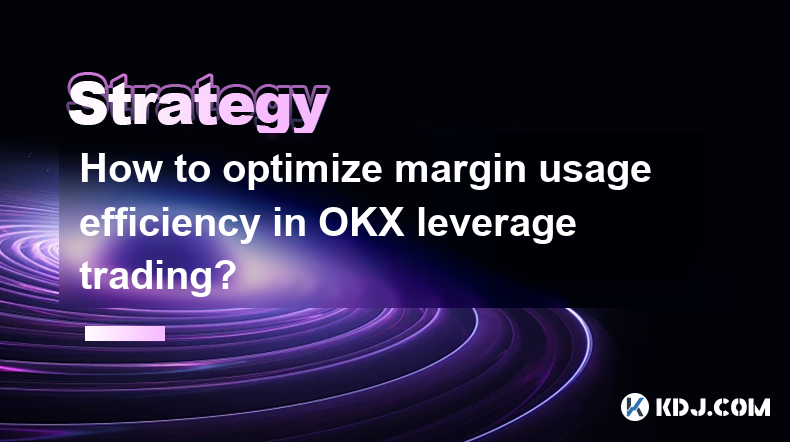
How to optimize margin usage efficiency in OKX leverage trading?
Apr 04,2025 at 03:21pm
Margin usage efficiency is a critical aspect of leverage trading on platforms like OKX, where traders aim to maximize their returns while managing risk. Understanding how to optimize margin usage can significantly enhance your trading performance. This article will delve into various strategies and techniques to help you make the most out of your margin...
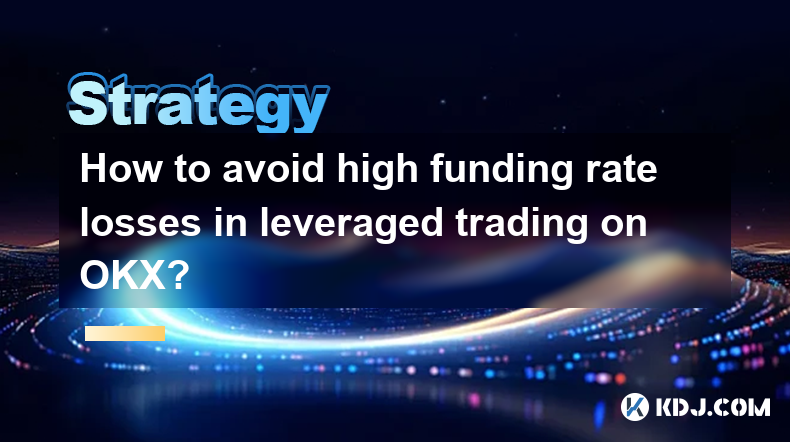
How to avoid high funding rate losses in leveraged trading on OKX?
Apr 04,2025 at 05:28pm
Understanding Funding Rates in Leveraged Trading on OKXFunding rates are a critical component of leveraged trading on platforms like OKX. They represent the periodic payments made between traders to maintain the balance between the futures price and the spot price of the underlying asset. When trading with leverage, understanding and managing funding ra...
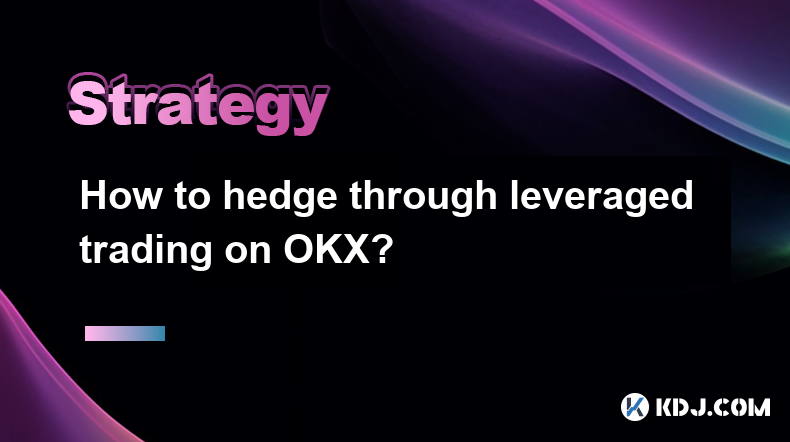
How to hedge through leveraged trading on OKX?
Apr 04,2025 at 01:42pm
Hedging through leveraged trading on OKX can be an effective strategy for managing risk in the volatile cryptocurrency market. This article will guide you through the process of setting up and executing a hedging strategy using OKX's leveraged trading features. We will cover the basics of leveraged trading, how to set up a hedge, and the steps to execut...
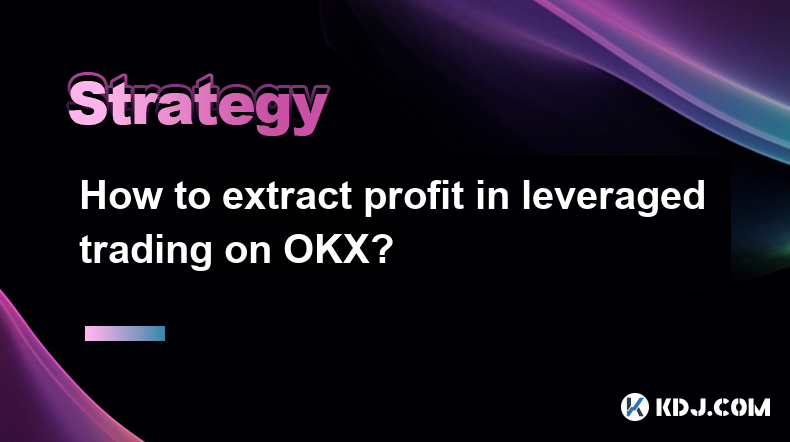
How to extract profit in leveraged trading on OKX?
Apr 04,2025 at 05:42am
Leveraged trading on OKX can be a powerful tool for traders looking to amplify their potential profits. However, it also comes with increased risk, making it essential to understand how to effectively extract profit from these trades. This article will guide you through the process of leveraging OKX's platform to maximize your gains while managing the i...
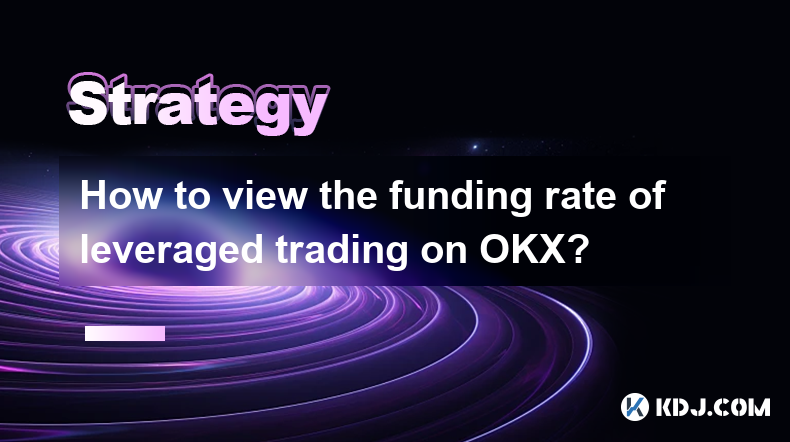
How to view the funding rate of leveraged trading on OKX?
Apr 04,2025 at 07:07am
Understanding the funding rate is crucial for anyone involved in leveraged trading on OKX. The funding rate is a mechanism used in perpetual futures contracts to ensure that the market price of the futures remains closely aligned with the spot price of the underlying asset. This article will guide you through the process of viewing the funding rate on O...
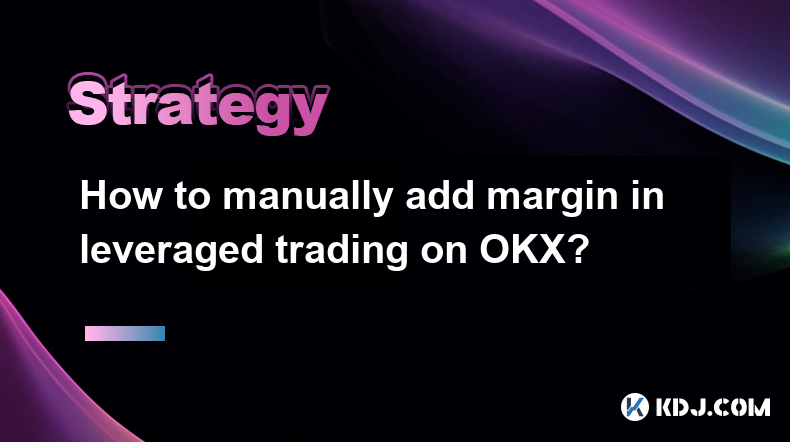
How to manually add margin in leveraged trading on OKX?
Apr 04,2025 at 05:21pm
Introduction to Margin in Leveraged Trading on OKXLeveraged trading on OKX allows traders to amplify their trading positions by borrowing funds from the platform. Margin is the amount of funds required to open and maintain these leveraged positions. Understanding how to manually add margin is crucial for managing your trades effectively and avoiding liq...

How to optimize margin usage efficiency in OKX leverage trading?
Apr 04,2025 at 03:21pm
Margin usage efficiency is a critical aspect of leverage trading on platforms like OKX, where traders aim to maximize their returns while managing risk. Understanding how to optimize margin usage can significantly enhance your trading performance. This article will delve into various strategies and techniques to help you make the most out of your margin...

How to avoid high funding rate losses in leveraged trading on OKX?
Apr 04,2025 at 05:28pm
Understanding Funding Rates in Leveraged Trading on OKXFunding rates are a critical component of leveraged trading on platforms like OKX. They represent the periodic payments made between traders to maintain the balance between the futures price and the spot price of the underlying asset. When trading with leverage, understanding and managing funding ra...

How to hedge through leveraged trading on OKX?
Apr 04,2025 at 01:42pm
Hedging through leveraged trading on OKX can be an effective strategy for managing risk in the volatile cryptocurrency market. This article will guide you through the process of setting up and executing a hedging strategy using OKX's leveraged trading features. We will cover the basics of leveraged trading, how to set up a hedge, and the steps to execut...

How to extract profit in leveraged trading on OKX?
Apr 04,2025 at 05:42am
Leveraged trading on OKX can be a powerful tool for traders looking to amplify their potential profits. However, it also comes with increased risk, making it essential to understand how to effectively extract profit from these trades. This article will guide you through the process of leveraging OKX's platform to maximize your gains while managing the i...

How to view the funding rate of leveraged trading on OKX?
Apr 04,2025 at 07:07am
Understanding the funding rate is crucial for anyone involved in leveraged trading on OKX. The funding rate is a mechanism used in perpetual futures contracts to ensure that the market price of the futures remains closely aligned with the spot price of the underlying asset. This article will guide you through the process of viewing the funding rate on O...

How to manually add margin in leveraged trading on OKX?
Apr 04,2025 at 05:21pm
Introduction to Margin in Leveraged Trading on OKXLeveraged trading on OKX allows traders to amplify their trading positions by borrowing funds from the platform. Margin is the amount of funds required to open and maintain these leveraged positions. Understanding how to manually add margin is crucial for managing your trades effectively and avoiding liq...
See all articles





















































































